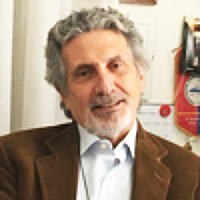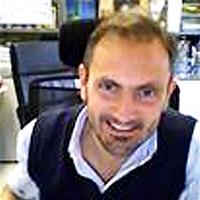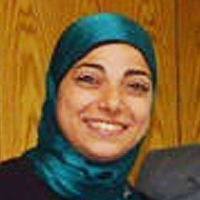A Rare Coexistence: Breast Cancer, Pheochromocytoma and Von Recklinghausen Disease
Published on: 11th December, 2023
Breast cancer associated with type-1 neurofibromatosis is a rare clinical entity. These patients have a higher risk of developing various types of cancers, especially tumors derived from the embryogenic neural crest, such as pheochromocytoma. This publication aims to add to the literature a rare association between Type-1 Neurofibromatosis, breast cancer, and pheochromocytoma.We present a rare case of a 51-year-old Tunisian woman with neurofibromatosis who was diagnosed with breast cancer and pheochromocytoma. The breast tumor was classified as T4b N1M0, and the discovery of the pheochromocytoma was incidental to thoracic-abdominal-pelvic CT. She underwent surgery to remove the adrenal gland and was referred to medical oncologists to receive chemotherapy for her breast cancer. Type-1 Neurofibromatosis disorder is a benign disease but can expose patients to numerous neoplasms. The challenging diagnosis at an early stage can worsen the prognosis and make medical care more difficult.
Osseous Choristoma with in a Dermolipoma: 17 Years Old Girl Case Report
Published on: 26th December, 2023
Bone choristoma within a dermolipoma is a rare epibulbar tumor with a low prevalence. It is a benign tumor that does not usually cause discomfort or functional problems to patients who suffer from it. Its treatment is surgical and with an aesthetic purpose.We report the case of a 17-year-old patient with a bone choristoma, a tooth, within a dermolipoma.Epibulbar bone choristoma is a rare benign tumor that causes little discomfort to patients who suffer from it and is asymptomatic in most cases. Computed tomography (CT) is essential in its diagnosis and its treatment is surgical, but always due to aesthetic reasons.
Pharmaceutical and Biopharmaceutical Industries: Revolutionizing Healthcare
Published on: 27th December, 2023
The drug and biopharmaceutical enterprises play a pivotal part in transforming healthcare through the incident and delivery of creative cures and remedies. This item explores the key facets of these areas, stressing their impact on healthcare.Pharmaceuticals, outlined as wealthy secondhand in the diagnosis, situation, or stop of disease, aim to restore, correct, or refine everyday functions. On the other hand, biopharmaceuticals (or biologicals) circumscribe sugars, proteins, nucleic acids, living containers, or tissues and are curative devices that arise natural beginnings to a degree persons, animals, or microorganisms. In contrast to common pills combined with synthetic processes, biopharmaceuticals are primarily acquired through unaffected processes, containing extraction from living constructions or production utilizing alteration of genetic material Table 1.• Some usual biopharmaceuticals, originally gleaned from animals or persons, are immediately created through biotechnological advancements.• For instance, healing insulin, previously gleaned from porcine pancreatic islets, is immediately made utilizing alteration of genetic material in yeast (Saccharomyces cerevisiae) or E. coli.• Biopharmaceuticals caused by alteration of genetic material usually fall into three classifications:• Substances nearly equal to the body’s own key signaling proteins.• Monoclonal antibodies look like those caused by apiece human immune plan against bacteria.• Receptor builds (fusion proteins) established uniformly happening receptors connected to the immunoglobulin frame.Examples includeFrom living systems: Whole blood and ancestry parts, organs and fabric transplants, stem containers, antibodies for inactive immunization, polluted microbiota, human bosom milk, and human reproductive containers.Produced by recombinant DNA: Blood determinants, fabric plasminogen activators, hormones, hematopoietic growth determinants, interferon, interleukin-located produce, vaccines, monoclonal antibodies, tumor loss determinants, therapeutic enzymes.• Key dispute Pharmaceutical manufacturing• Biopharmaceuticals• Healthcare strike• Innovative medicines• Therapeutic fragments• Recombinant DNA technologies• Personalized cure• Gene medicines• Regulatory processes.
Patient with Fibroadenoma on Biopsy, Found to have Phyllodes on Final Pathology: A Case Report
Published on: 28th December, 2023
Distinguishing between fibroadenomas and phyllodes tumors is a challenge in breast surgery, despite advances in both radiology and pathology. In this case report, we analyze a patient presenting with a breast mass with multiple core needle biopsy results consistent with fibroadenoma, who underwent enucleation and was found to have phyllodes tumor on final pathology, thereby requiring surgical re-excision. This case report highlights the importance of patient clinical presentation in differentiating fibroadenomas and phyllodes tumors and explores how to achieve appropriate margins upon surgical re-excision after prior enucleation of phyllodes tumor via ultrasound localization of a seroma.
Genital Condyloma in a 2-Year-Old Child Secondary to Circumcision: A Case Report
Published on: 10th January, 2024
Accumulated condylomas are exophytic tumors with a warty and hyperkeratosic surface due to the Human papillomavirus (HPV). Its prevalence in children is difficult to estimate due to limitations in epidemiological data. Its recurrent character is found in 30% of patients. Its management is very complex in children because of skin fragility. Circumcision is an operation consisting of the removal of part of the foreskin. This practice is done either with a simple knife or a pair of non-aseptic scissors which can be a source of contamination including HPV (Condyloma). Traditional circumcision does not seem to be reported in the literature as a mode of contamination. We report a case of genital condyloma in a child 2 years after circumcision. This is a 2-year-old male with no medical history but with a surgical history of circumcision that was brought by his parents in dermatological consultation for papular lesions accumulated on the penis. At the interrogation, we found the notion of recent circumcision performed by a tradithérapeute. The physical examination finds a good general condition. Dermatological examination reveals on the glans of multiple papules, exophitic, with warty and hyperkeratotic surface, of normal skin color. Furthermore, the physical examination of both parents was normal. The diagnosis of accumulated condyloma secondary to probable circumcision was retained before the clinical appearance of the lesions. Two electrocoagulation sessions spaced one month apart under local anesthesia were the treatment with a favorable evolution.
Pediatric Dysgerminoma: Unveiling a Rare Ovarian Tumor
Published on: 19th January, 2024
Background: Dysgerminomas, account for only 1% - 2% of all malignant ovarian neoplasms.Objective: This case report aims to present a rare occurrence of dysgerminoma in a pediatric patient, highlighting the clinical characteristics, diagnosis, and management.Case presentation: We present a case of dysgerminoma in a 12-year-old girl who presented with a three-week history of pelvic pain and progressive abdominal swelling. Physical examination revealed a distended abdomen with evident suprapubic fullness, and a palpable abdominopelvic mass measuring approximately 20 weeks in size. Imaging studies confirmed the presence of a solid heterogeneous mass originating from the pelvis. The patient underwent a right salpingo-oophorectomy without complications. Histological examination coupled with an immunohistochemical study confirmed the diagnosis of dysgerminoma. The patient had an uneventful postoperative course and was discharged without adjuvant treatment. Regular follow-up visits, physical examinations, ultrasound scans, and lactate dehydrogenase assays were initiated for monitoring. Conclusion: Prompt recognition and appropriate surgical intervention, followed by regular monitoring, are crucial for optimal outcomes in pediatric dysgerminoma cases.
Thyroid Cancer and Quality of Life: A Literature Review
Published on: 5th February, 2024
Thyroid cancer, characterized by the development of malignant tumors in the cells of the thyroid gland, impacts the quality of life and well-being of diagnosed patients. This article explores different aspects of this type of cancer, including everything from its typologies, incidence, causes, and risk factors to symptoms, diagnostic methods, and treatment options. Furthermore, the impact on Health-Related Quality of Life (HRQoL) is addressed, highlighting that, although the prognosis is generally favorable, patients can experience significant negative repercussions. Therefore, the need for further investigation into the priorities of psychological intervention with the population with this problem is emphasized.
Is there a Place for Klotho in Alzheimer’s disease?
Published on: 29th February, 2024
Alzheimer’s disease, a major healthcare concern, lacks an effective pharmacological therapy to change its irreversible progression. In this work, we present Klotho, a protein associated with aging that is involved in the regulation of numerous physiological processes and is a serious candidate to be a pharmacological target to act on. Klotho’s mRNA has been found in neurons of a variety of brain regions (cortex, hippocampus). The best studied and prominent function of Klotho is as the co-receptor of fibroblast growth factor 23 (FGF23), through which Klotho controls renal phosphate excretion and vitamin D metabolism. Reduced serum levels of Klotho in mice have been associated with a shorter life expectancy and with numerous pathological conditions such as renal disease, vascular calcification, neurodegeneration, and others. Moreover, overexpression of Klotho leads to opposite effects resulting in increased survival rates. In this review we address different signaling pathways in which Klotho is involved in one way or another, focusing on those pathways that could serve as pharmacological targets to modify the evolution of Alzheimer’s disease. We describe how Klotho inhibits signaling cascades involved in cellular senescence, fibrosis, inflammation, and apoptosis all of which are mediated by tumor growth factor β (TGF- β), nuclear factor kappa K (NF- κ B), insulin-like growth factor 1 (IGF-1) or Wnt. We also highlight how Klotho is able to activate anti-inflammatory and antioxidant signaling pathways. Although there are no drugs that act specifically on Klotho, compounds currently on the market such as hormone-based drugs, pravastatin, losartan, fosinopril, and rapamycin have been shown to increase the expression of this protein and are also discussed.
The Accuracy of pHH3 in Meningioma Grading: A Single Institution Study
Published on: 26th March, 2024
Introduction: In the latest WHO classification of central nervous system tumors, Mitotic Index (MI) counted on Phosphohistone-H3 stained slides (pHH3-MI) has been suggested as a valid proliferative marker in various tumors including in the evaluation of meningioma grading.We aim to report our own experience in assessing the efficiency of the anti-pHH3 antibody as a grading tool for meningiomas.Methods: A retrospective study was conducted on a series of 40 meningiomas diagnosed from March 2020 to April 2021 at the Pathology Department of the Military Hospital of Tunis. We attempted immunohistochemistry and compared MI assessed on both pHH3 and HE-stained slides.Results: According to the HE-MI and pHH3-MI, the 40 cases of meningiomas were respectively divided into 35 versus 29 grade 1 cases, four versus eight grade 2 cases, and one versus three grade 3 cases. A highly significant correlation was found between pHH3-MI and HE-MI (p < 0.001). A significantly higher sensitivity in the pHH3 counting method was reported in our study. Discussion: we found, in accordance with the literature, that pHH3-MI is more reliable and accurate in mitotic counting, therefore exhibiting a high sensitivity in tumor grading, reported by an upgrade within 22,5% of the cases.Conclusion: PHH3-MI count facilitated a rapid reliable grading of meningiomas. However, molecular characteristics that could have a potentially significant impact on tumor progression should be the subject of further research.
Endoscopic Endonasal total Removal of a Suprasellar, Preinfundibular Retro Chiasmatic Craniopharyngioma: A Surgical Case Report
Published on: 26th March, 2024
Craniopharyngiomas are benign tumors (WHO Grade I), seen in children and adults. Because of their location, they can require challenging clinical and surgical management. In fact, often, because of the presence of calcifications, of a capsule very strongly adherent to neurovascular structures, of the relationship with hypophysis, pituitary stalk, chiasm, carotids, the circle of Willis, basilar artery, and third ventricle, risk of mortality and morbidity is still mandatory. Various surgical techniques have been proposed: transcranial, transsphenoidal, and supraorbital approaches for surgical resection and treatment of craniopharyngiomas. Still, there is no common consent, but often the endonasal transsphenoidal extended procedures are considered the gold standard in many cases. We present a surgical technique of a case of complete surgical removal of an infundibular and retro chiasmatic craniopharyngioma, via an endoscopic endonasal transphenoidal transplanum approach.
Contrast-enhanced Susceptibility Weighted Imaging (CE-SWI) for the Characterization of Musculoskeletal Oncologic Pathology: A Pictorial Essay on the Initial Five-year Experience at a Cancer Institution
Published on: 2nd April, 2024
Susceptibility-weighted imaging (SWI) is based on a 3D high-spatial-resolution, velocity-corrected gradient-echo MRI sequence that uses magnitude and filtered-phase information to create images. It SWI uses tissue magnetic susceptibility differences to generate signal contrast that may arise from paramagnetic (hemosiderin), diamagnetic (minerals and calcifications) and ferromagnetic (metal) molecules. Distinguishing between calcification and blood products is possible through the filtered phase images, helping to visualize osteoblastic and osteolytic bone metastases or demonstrating calcifications and osteoid production in liposarcoma and osteosarcoma. When acquired in combination with the injection of an exogenous contrast agent, contrast-enhanced SWI (CE-SWI) can simultaneously detect the T2* susceptibility effect, T2 signal difference, contrast-induced T1 shortening, and out-of-phase fat and water chemical shift effect. Bone and soft tissue lesion SWI features have been described, including giant cell tumors in bone and synovial sarcomas in soft tissues. We expand on the appearance of benign soft-tissue lesions such as hemangioma, neurofibroma, pigmented villonodular synovitis, abscess, and hematoma. Most myxoid sarcomas demonstrate absent or just low-grade intra-tumoral hemorrhage at the baseline. CE-SWI shows superior differentiation between mature fibrotic T2* dark components and active enhancing T1 shortening components in desmoid fibromatosis. SWI has gained popularity in oncologic MSK imaging because of its sensitivity for displaying hemorrhage in soft tissue lesions, thereby helping to differentiate benign versus malignant soft tissue tumors. The ability to show the viable, enhancing portions of a soft tissue sarcoma separately from hemorrhagic/necrotic components also suggests its utility as a biomarker of tumor treatment response. It is essential to understand and appreciate the differences between spontaneous hemorrhage patterns in high-grade sarcomas and those occurring in the therapy-induced necrosis process in responding tumors. Ring-like hemosiderin SWI pattern is observed in successfully treated sarcomas. CE-SWI also demonstrates early promising results in separating the T2* blooming of healthy iron-loaded bone marrow from the T1-shortened enhancement in bone marrow that is displaced by the tumor.SWI and CE-SWI in MSK oncology learning objectives: SWI and CE-SWI can be used to identify calcifications on MRI.Certain SWI and CE-SWI patterns can correlate with tumor histologic type.CE-SWI can discriminate mature from immature components of desmoid tumors.CE-SWI patterns can help to assess treatment response in soft tissue sarcomas.Understanding CE-SWI patterns in post-surgical changes can also be useful in discriminating between residual and recurrent tumors with overlapping imaging features.

HSPI: We're glad you're here. Please click "create a new Query" if you are a new visitor to our website and need further information from us.
If you are already a member of our network and need to keep track of any developments regarding a question you have already submitted, click "take me to my Query."
















